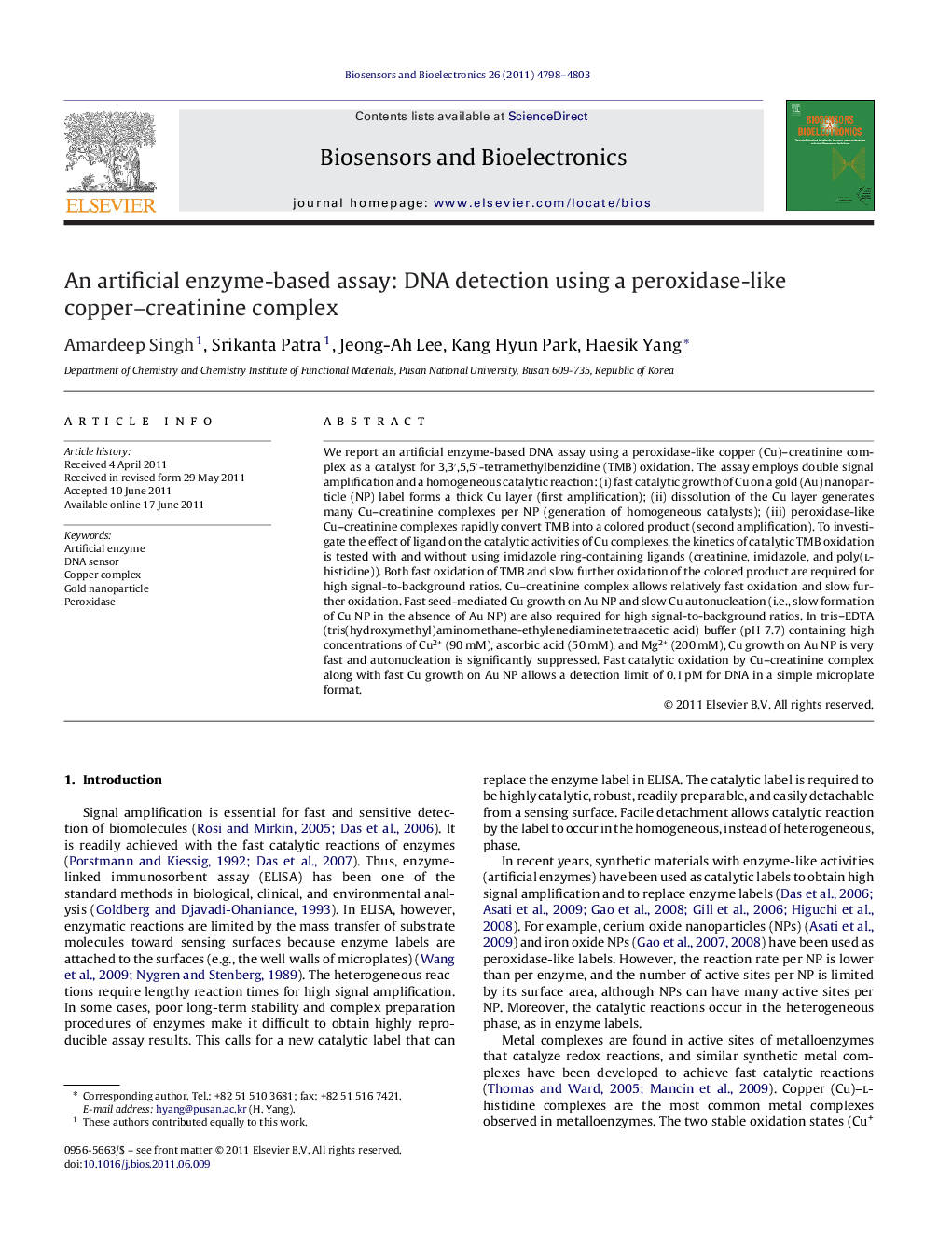| Article ID | Journal | Published Year | Pages | File Type |
|---|---|---|---|---|
| 867999 | Biosensors and Bioelectronics | 2011 | 6 Pages |
We report an artificial enzyme-based DNA assay using a peroxidase-like copper (Cu)–creatinine complex as a catalyst for 3,3′,5,5′-tetramethylbenzidine (TMB) oxidation. The assay employs double signal amplification and a homogeneous catalytic reaction: (i) fast catalytic growth of Cu on a gold (Au) nanoparticle (NP) label forms a thick Cu layer (first amplification); (ii) dissolution of the Cu layer generates many Cu–creatinine complexes per NP (generation of homogeneous catalysts); (iii) peroxidase-like Cu–creatinine complexes rapidly convert TMB into a colored product (second amplification). To investigate the effect of ligand on the catalytic activities of Cu complexes, the kinetics of catalytic TMB oxidation is tested with and without using imidazole ring-containing ligands (creatinine, imidazole, and poly(l-histidine)). Both fast oxidation of TMB and slow further oxidation of the colored product are required for high signal-to-background ratios. Cu–creatinine complex allows relatively fast oxidation and slow further oxidation. Fast seed-mediated Cu growth on Au NP and slow Cu autonucleation (i.e., slow formation of Cu NP in the absence of Au NP) are also required for high signal-to-background ratios. In tris–EDTA (tris(hydroxymethyl)aminomethane-ethylenediaminetetraacetic acid) buffer (pH 7.7) containing high concentrations of Cu2+ (90 mM), ascorbic acid (50 mM), and Mg2+ (200 mM), Cu growth on Au NP is very fast and autonucleation is significantly suppressed. Fast catalytic oxidation by Cu–creatinine complex along with fast Cu growth on Au NP allows a detection limit of 0.1 pM for DNA in a simple microplate format.
